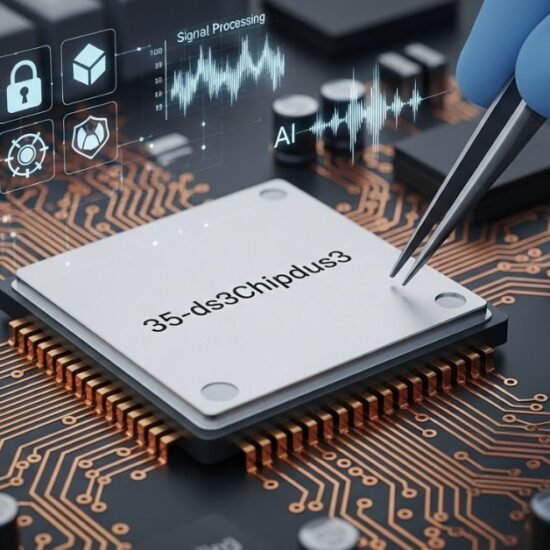Introduction
The NXP LPC84x family is a flexible set of Arm Cortex-M0+ microcontrollers (MCUs) that is highly popular in embedded systems of both price-sensitive and performance-limited applications. However, it is not only the case that designing around these powerful chips is all about GPIO and peripherals; the LPC84x startup power needs are highly important in system reliability, stability, and startup time.
As edge computing, IoT, and low-power devices keep multiplying in 2025, designers are pushing microcontrollers to the edge of their electrical capabilities in response. Lack of an adequate account of power-up behavior may lead to difficult-to-debug problems, particularly in battery-powered or energy-harvesting systems.
This paper gives a detailed and yet easy-to-understand overview of the LPC84x Startup Power Requirements power behavior, such as the voltage levels, power sequence, current consumption, brown-out detect operation, and board-level considerations. We have packaged the knowledge of official datasheets, professional application engineers, and use cases to provide you with a final authoritative resource that you can not find elsewhere.
Understanding the LPC84x Series at a Glance
The NXP Semiconductors LPC84x microcontroller family (e.g., LPC845, LPC844) is a general-purpose and low-power microcontroller. These MCUs are based on the Arm Cortex-M0+ core, high-precision timing capability, analogous integration, capacitive touch, and software compatibility with LPCOpen and MCUXpresso.
Key Features (LPC845 as an example):
- CPU: 30 MHz Cortex-M0+
- Flash: Up to 64 KB
- RAM: Up to 16 KB
- Voltage Range: 1.8 V to 3.6 V
- There are five different power modes: Deep Power Down, Active, Sleep, and Deep Sleep.
These MCUs are aimed at human-machine interfaces, sensor gateways, motor control, and other general embedded applications—and power-up reliability is key to success.
Why Startup Power Requirements Matter
At power-on of the system, correct values of voltages, sequencing, and current levels determine whether the MCU will act as intended—or silently fail.
What’s at Stake?
- The behavior of the bootloader might fail when the supply does not stabilize soon.
- Spike of voltage may exceed VDD_MAX and reduce lifetime.
- A lack of current may lead to latch-up or brownout resets.
- Peripherals and timers can stall when the domain of power is not stable.
Supply Voltage Parameters and Ratings
The NXP LPC84x Startup Power Requirements datasheet (Rev 3.0, 2025) states that the level of voltages has a direct influence on startup behavior. Designers have to know absolute maximum ratings, operation conditions, and suggested power ranges.
Key Voltage Ratings:
| arameter | Value | Notes |
| VDD (I/O Supply) | 1.8V to 3.6V | Standard operating range |
| VDD Max (Abs Max) | 4.0V | Short-duration only |
| VSS (Ground) | 0V Reference | Always stable before VDD ramp-up |
| Startup Threshold (typ) | ~1.63V | Below this, chip may brown-out |
| Min Rise Time to Full Supply | 1 ms | For stable operation |
Use a regulator with a regulated rise time and slow start upon power-on, which will work best.
Current Requirements at Power-On
Although low typical operating currents are characteristic of the LPC84x Startup Power Requirements the instantaneous startup inrush can be unexpected to designers.
Power-On Current Profile:
| ode | Current Required (typ) |
| During Startup | 1.5–3 mA (peak pulse) |
| Idle Mode | ~160 μA |
| Active Execution | ~2.1 mA @ 30 MHz |
Considerations:
- Capacitance on the VDD line should de-spike any startup surges.
- Under worst-case temp, external LDOs will be required to provide minimum peak current.
Silent boot failures can be caused by insufficient startup current provisioning to cross the brown-out threshold by the MCU.
Brown-Out Detection (BOD) and Reset Behavior
An inbuilt Brown-Out Detector (BOD) in the LPC84x maintains the chip in a reset state until the VDD is within a reasonable range.
BOD Details:
- Typical Trip Voltage: ~1.63V
- Hysteresis: 50-100 mV
- Option of disabling: This is an option of the IOCON register.
The BOD also makes sure that the code does not begin executing until the supply is fully ramped up—ensuring that corrupted flash reads do not happen during glitches in power.
Startup Timing and Stabilization Delays
Even when power levels are up to useful values, the LPC84x MCU needs a reasonable startup delay for internal clock oscillator and flash interface initialization.
Typical Time Durations:
| Component | Required Delay (typ) |
| Internal Oscillator | ~100 µs |
| Flash Controller Ready | ~500 µs |
| Full CPU Readiness | ~1 – 2 ms |
In case external regulators or sensors require additional time to stabilize, block user code with watchdog-disabled timer startup subroutines (with SysTick, say).
Power Sequencing and Peripheral Readiness
Some startup anomalies can be explained by wrong sequencing between power domains—especially in the presence of temperature sensors, touch input, or ADCs.
Best Practices:
- Make sure VDD is stabilized prior to I/O pull configurations assert.
- Do not switch on ADCs until VREF is stable.
- Add pull-down control signal to control floating inputs in ramp.
| Peripheral | Sequencing Sensitivity | Notes |
| I2C Slave | Medium | Wait 500 µs min after VDD |
| ADC/VREF | High | Delay conversion start |
| GPIO pull-up | Low | Available immediately |
Sleep and Wake Behavior Impacting Startup
Other systems use Deep Power-down mode and wake up like startup. One should treat electrical cold-start and firmware-level warm-start differently.
Key Differences:
- Cold Startup: VDD has been powered first.
- Wake-Up Startup: wakes out of deep power-down; VDD already stable.
Peripherals might not boot up exactly the same during the wake-up process—particularly clocks and GPIO states.
Startup Comparison Chart
| Condition | BOD Needed? | Flash Reload? | RAM Preserved? |
| Cold Start | Yes | Yes | No |
| Deep Sleep | No | No | Yes |
| Power Loss | Yes | Yes | No |
Entry points have to be supported in firmware design with clear condition flags or signature space in backup SRAM.
Board-Level Design Guidelines for Stable Startup
In order to make all of this work in the real world, your hardware implementation should be able to mirror the constraints and capabilities of the LPC84x.
Recommendations:
- Install a high-quality LDO that has 1.5x the initial startup current.
- Add a 4.7 – 10 uF bulk cap near VDD pins
- Make sure that there are decoupling capacitors near all power pins (0.1 uF is suggested).
- It is important to avoid floating pins and, in particular, those connected to an interrupt-capable GPIO.
- Check external pull-down/up on RESET, ISP, and DEBUG lines.
- Add VDD ramp test points to development.
Common Pitfalls and Debugging Unstable Power-Ups
- Startups of MCU can be a pain. Following this checklist, in order to methodically identify root causes that concern power, follow:
Common Startup Failures:
- Random system reboot or ISP mode.
- Irregular firmware begins following a soft reset.
- Watchdog timeouts are reset by brownouts.
- I2C/SPI glitches at early wake.
Debugging Tools:
| Tool | Purpose |
| Oscilloscope | Check VDD rise time and noise |
| Logic Analyzer | Trace early signal sequences |
| MCU Registers Read | Monitor reset causes in firmware |
Finally, verify all power specifications of the referenced specs in the latest LPC84x Startup Power Requirements User Manual of version specifications.
FAQs
What is the LPC84x Startup Power Requirements voltage?
Normally about 1.63 V as set by the built-in Brown-Out Detector (BOD).
Is it possible to disable BOD to hurry up the start?
It can, but it is not suggested unless you are sure of your system being stable.
What is the LPC84x start-up current requirement?
anticipate only a little pulse of 1.5-3 mA; capacitors must buffer.
Does LPC84x Startup Power Requirements have soft restarts?
Yes, by using watchdogs or software resets while internal voltages and RAM are held constant.
Does deep power-down differ in any way from full power-on?
Yes, the peripheral states are different, and memory retention is different—do not be the same in the firmware.
Conclusion
The LPC84x Startup Power Requirements series provides flexibility, performance, and affordability—but only when startup power requirements are taken into account and correctly designed. Careful voltage planning for sequencing and startup time success depends on the real-world behavior of the chip in the first few milliseconds.
With the knowledge presented herein this guide, engineers are able to do away with the majority of the startup-related bugs and create strong embedded products that will act in a consistent manner regardless of power conditions.
Visit the rest of the site for more interesting and useful articles.




